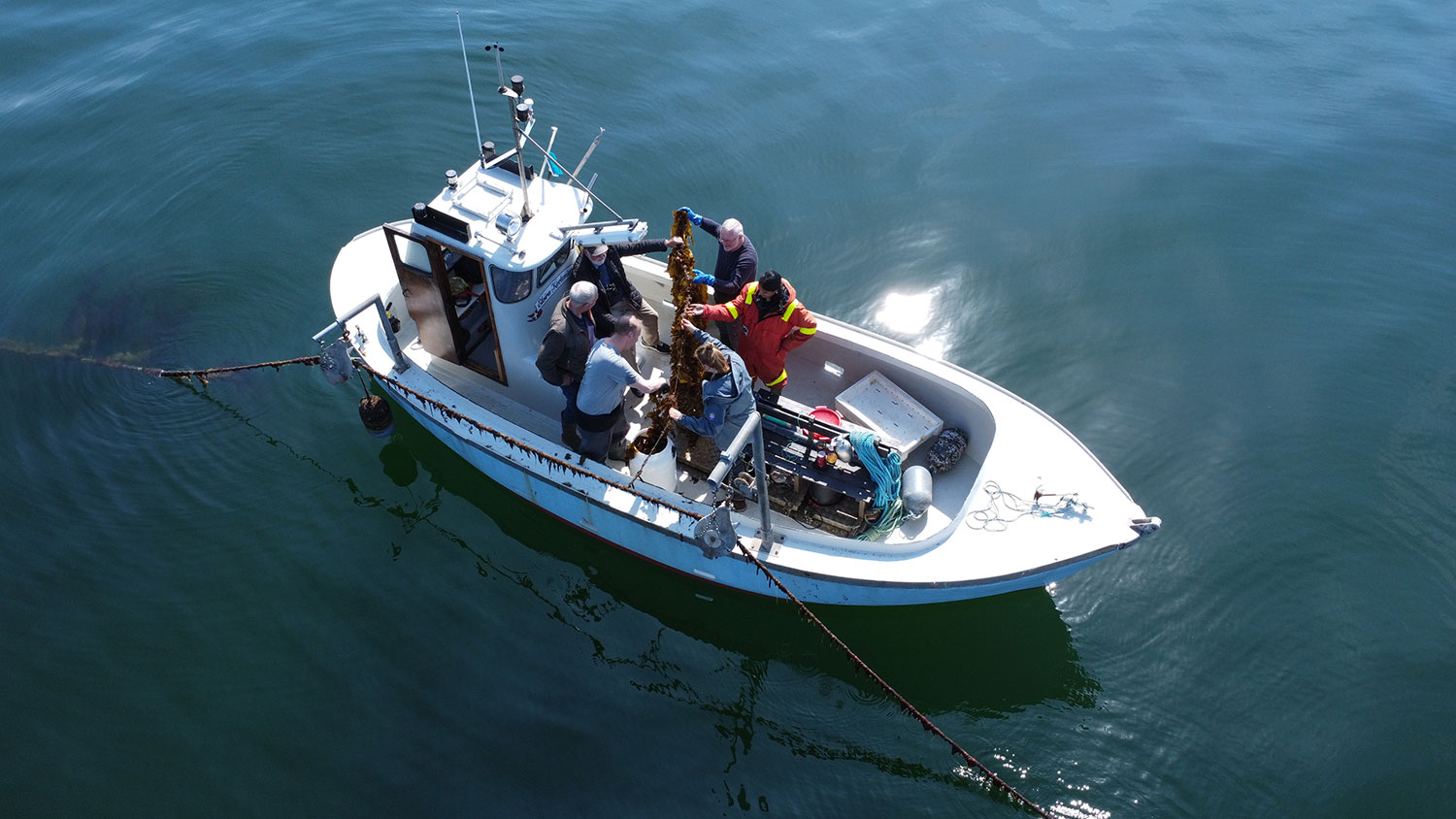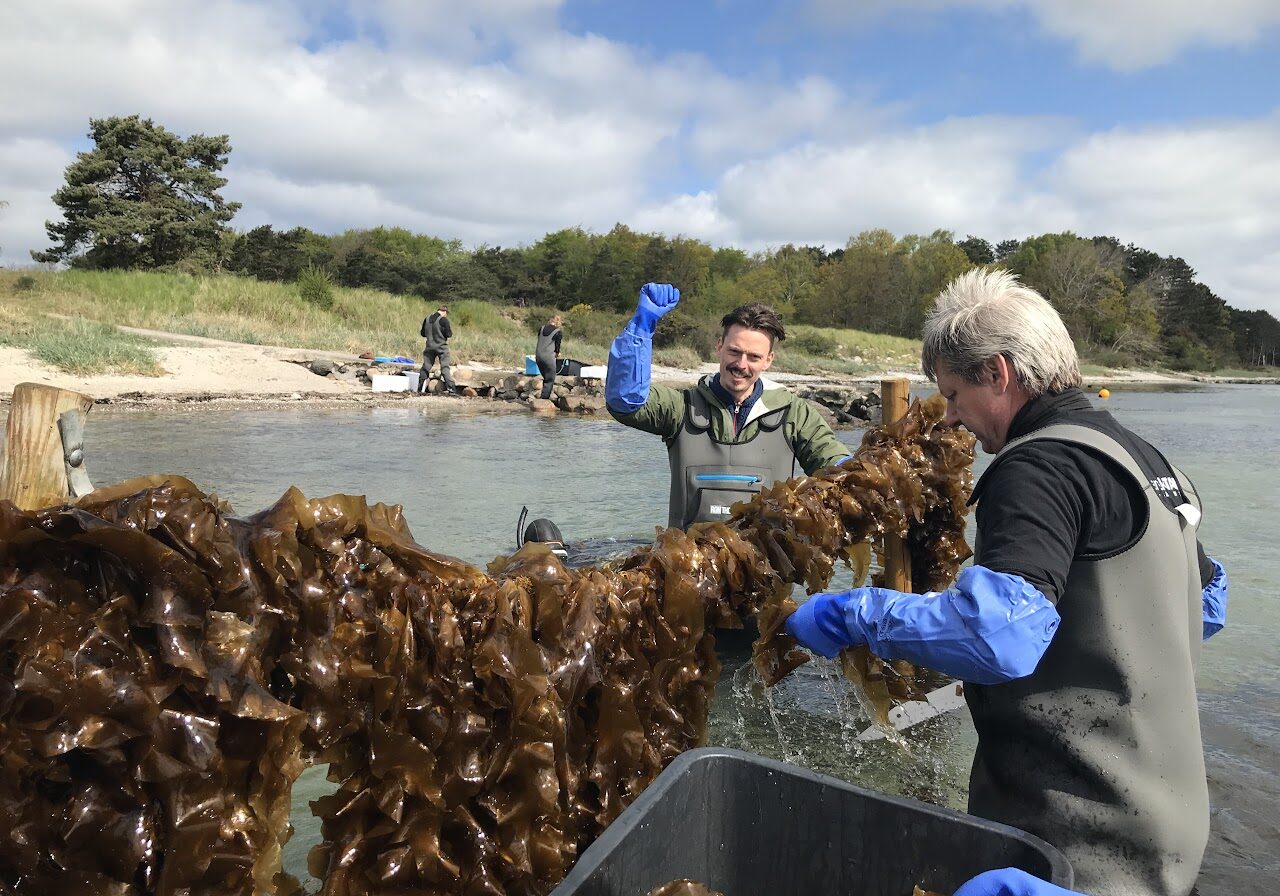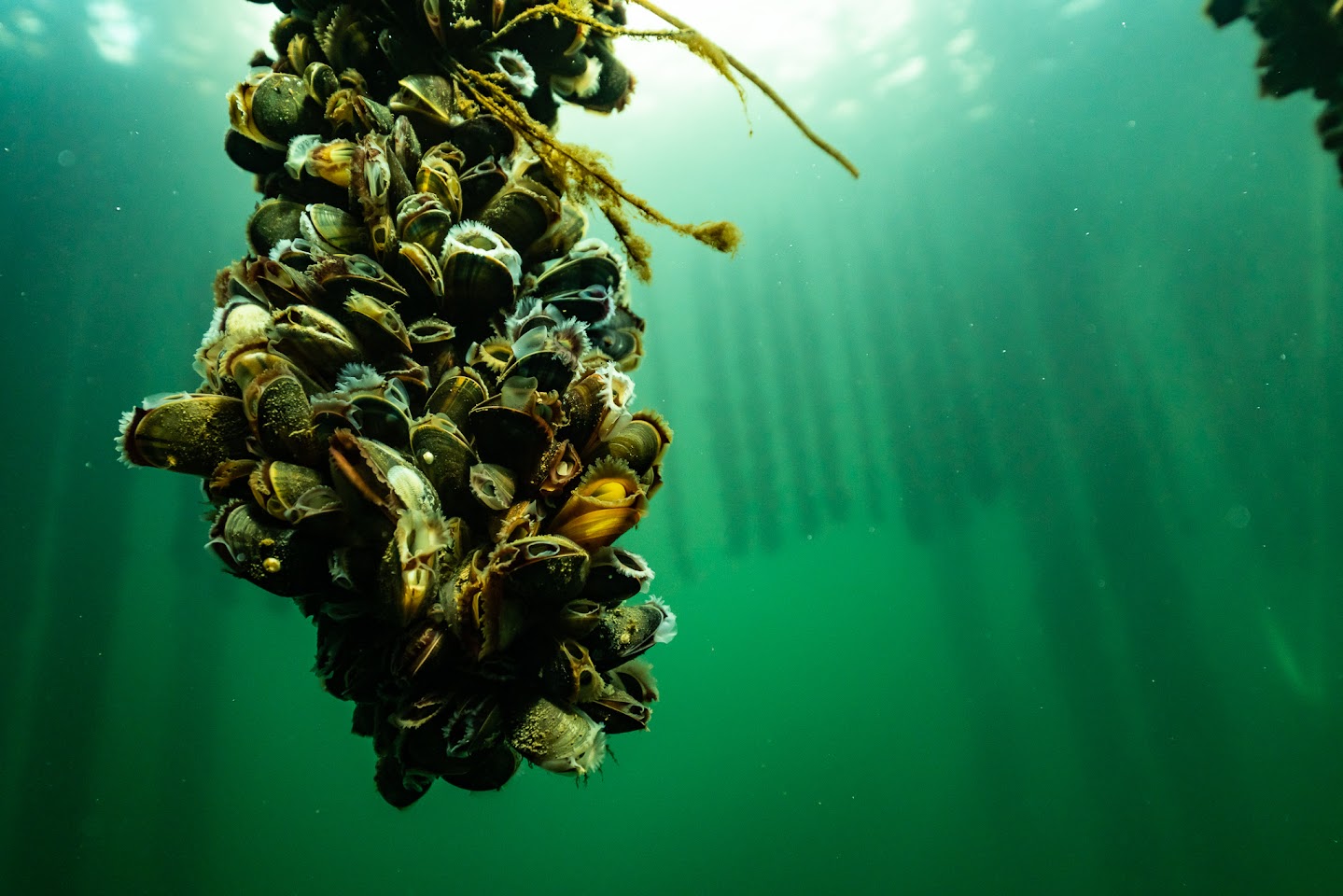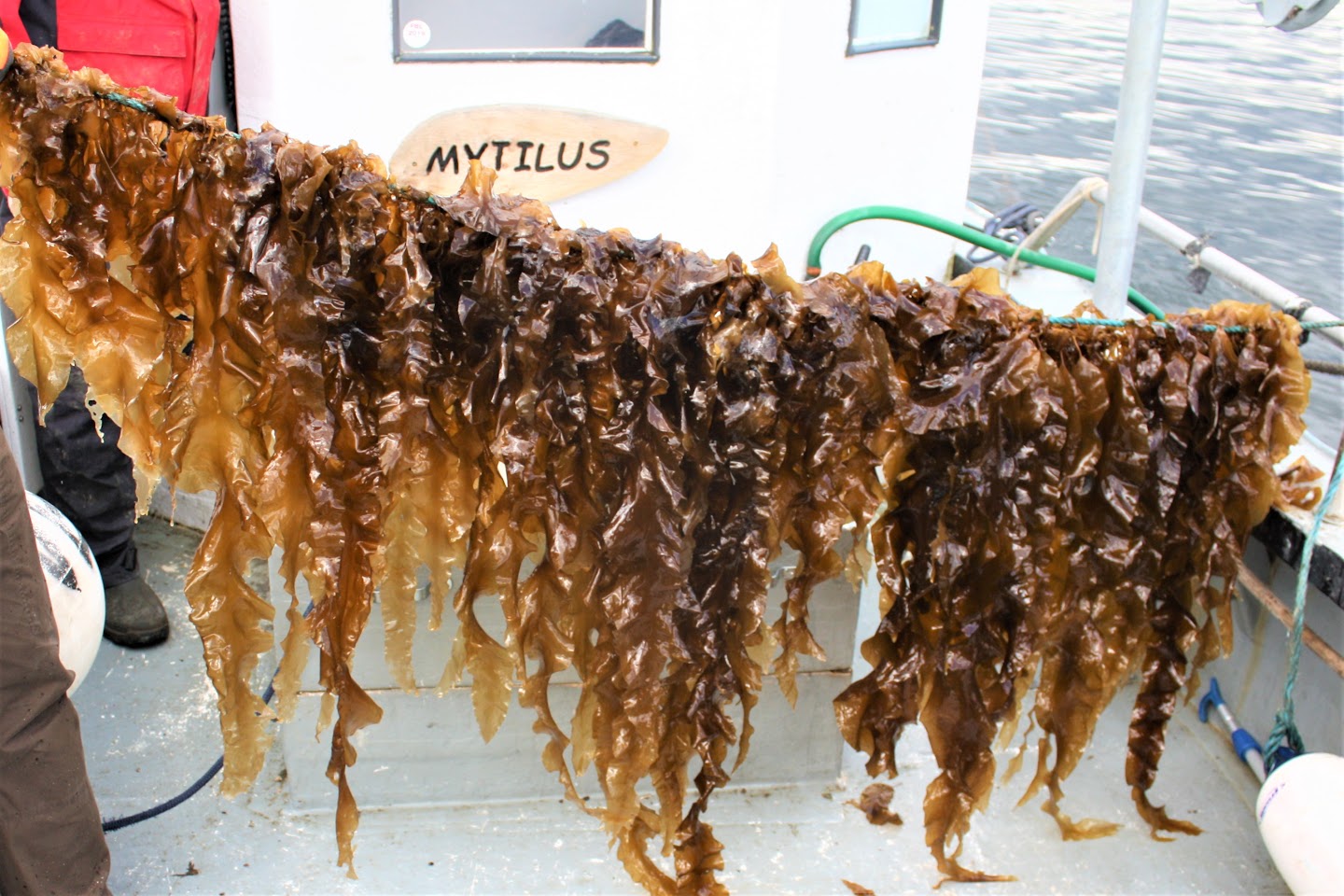Eutrophication and ecosystem stress
The most important reason why regenerative ocean farming is such a good idea is the disheartening fact that our oceans are facing a number of severe threats induced by human activity. Chief among these in many coastal areas is eutrophication.
Eutrophication is a process that results in excessive plant and algal growth in water bodies due to an increased supply of nutrients, primarily nitrogen and phosphorus. These nutrients can come from various sources, including agricultural runoff, wastewater discharge, and industrial pollutants. While nutrients are essential for the growth of aquatic plants, an overabundance can lead to significant environmental and economic issues. The process of eutrophication follows the 4 steps outlined below:
- Nutrient Enrichment: Excess nutrients enter a water body, increasing the availability of nitrogen and phosphorus. Leads to…
- Algal Bloom: These nutrients promote the rapid growth of algae and phytoplankton, leading to algal blooms. Leads to…
- Decomposition: When the algae die, they sink to the bottom where they are decomposed by bacteria. This process consumes oxygen from the water, leading to decreased oxygen levels. Leads to…
- Hypoxia and Anoxia: If the oxygen depletion is severe, it can result in hypoxic (low oxygen) or anoxic (no oxygen) conditions, which can be deadly for aquatic life.
Traditionally, humans living along the coastlines of European countries have looked to the ocean to fulfil basic needs. Due to the consequences of eutrophication and other environmental factors such as climate change, overfishing and ocean acidification we are as a species forced to reinvent our approach to how we use the resources of the ocean and adopt regenerative principles.
The proliferation of regenerative ocean farming is driven by a confluence of environmental, economic, social, technological and political factors. The regenerative practice offers a promising solution to some of the most pressing challenges facing our oceans and global food systems. Because regenerative aquaculture improves marine ecosystems, creates economic opportunities and promotes sustainable food production, it is gaining ground in more and more places.
Physical farm setup
A regenerative ocean farm typically utilizes a vertical farming setup that maximizes the use of space and supports multiple species. The farm consists of vertical lines anchored to the seabed and connected to floating buoys at the surface. Horizontal ropes or nets are suspended between these vertical lines, creating a grid-like structure in the water column. Heavy anchors on the seafloor keep the structure stable, while buoys on the surface maintain tension and support the weight of the growing organisms.
The farm can be used for the following purposes:
Seaweed cultivation
Seaweed is grown on horizontal ropes or nets suspended in the water column. Different species of seaweed can be cultivated at various depths, depending on their specific light and nutrient requirements.
Shellfish cultivation
Mussels, oysters, and scallops are grown in mesh cages or on lines attached to the structure. These shellfish filter the water, improving its quality and benefiting the surrounding marine environment.
Multitrophic cultivation
By integrating multiple species, such as different types of seaweed and shellfish, the farm creates a balanced ecosystem. This polyculture approach enhances biodiversity and resilience against pests and diseases.

Some farms may include floating platforms for easier access and management. These platforms can house equipment for harvesting, monitoring, and maintenance. Increasingly, farms incorporate sensors to monitor environmental conditions such as temperature, salinity, and nutrient levels. This data helps optimize the growth conditions for the farmed species.
Setting up a regenerative ocean farm usually follows the steps outlined below:
- Anchoring: Heavy anchors are placed on the seafloor to provide stability. These can be concrete blocks, metal anchors, or natural rock formations.
- Vertical lines: Strong ropes or cables are attached to the anchors and extend up to the surface, where they are connected to buoys. These vertical lines form the backbone of the farm’s structure.
- Horizontal ropes/nets: Horizontal ropes or nets are tied between the vertical lines at various depths. These provide the growing surfaces for seaweed and support for shellfish cages.
- Cultivation: Seeded lines of seaweed are wrapped around or attached to the horizontal ropes. Shellfish are placed in mesh bags or cages that hang from the structure.
- Buoys and Floating Platforms: Buoys at the surface maintain the structure’s position and tension.
Regular maintenance is essential to ensure the structural integrity and productivity of the farm. This includes ensuring that anchors are secure, and buoys are properly tensioned and regularly inspecting for wear and tear and replacing damaged sections.
The physical setup of a regenerative ocean farm is designed to be efficient, sustainable, and environmentally beneficial. By utilizing a vertical farming structure with anchored lines, horizontal nets, and integrated species cultivation, these farms maximize space, enhance marine ecosystems, and provide valuable food resources.
Crops
In a regenerative ocean farm, the primary crops include seaweed and shellfish. These crops are selected for their ability to improve environmental conditions while providing valuable economic products.

Brown algae
Common types include Saccharina latissima (sugar kelp) and Alaria esculenta (winged kelp). Kelp is typically grown on horizontal lines or nets suspended in the water column. Kelp is used in food products, cosmetics, fertilizers, animal feed, and biofuels. It is also rich in vitamins and minerals, making it a valuable dietary supplement.
Red algae
Notable examples include Palmaria palmata (dulse), Porphyra (nori) and Chondrus crispus (Irish moss). Like kelp, red seaweeds are grown on ropes or nets, often at varying depths to optimize light exposure. They seaweeds are used in culinary dishes, carrageenan production (a thickening agent in food), cosmetics, and pharmaceuticals.
Green algae
Common types include Ulva lactuca (sea lettuce) and Codium fragile (dead man's fingers). Green algae are used in salads, soups, and other culinary dishes. They are also explored for their potential in biofuel production and as animal feed supplements.

Blue mussels
Mytilus edulis (blue mussels) are typically grown on ropes suspended vertically in the water column or in mesh socks. Mussels filter large volumes of water, removing particulate matter and improving water quality. They also contribute to nutrient cycling and provide habitat for other marine organisms. Mussels are a popular seafood product, high in protein and omega-3 fatty acids.
Oysters
Due to its invasive status in some European waters, Crassostrea gigas (Pacific oyster) is usually grown in a triploid version, which cannot reproduce. Oysters are cultivated in mesh cages, trays, or on longlines in the water column and are highly valued for their culinary uses. They are also rich in nutrients such as zinc and vitamin B12.


